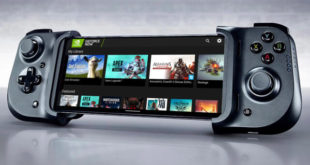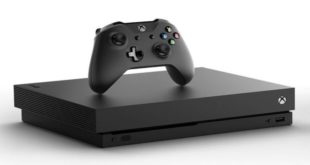
Last week, AMD took the wraps off its annual major driver refresh, dubbed Radeon ReLive this time around. While the company releases periodic driver updates with support for new games and various bug fixes, it launches a significant platform update for new features and capabilities roughly once a year. The new release brings the usual assortment of bug fixes and performance improvements, but it also promises a new power-efficiency feature, dubbed Radeon Chill.
Radeon Chill is designed to change the game’s FPS rate to correspond to what’s happening on-screen. Imagine a situation where you’re playing a game and either alt-tab out to do something else, or simply have to get up and leave the keyboard. Alternately, you might be crafting, playing a mini-game, or sorting through your inventory. Either way, there’s not much going on at this particular point. Ordinarily, your GPU will simply render the highest frame rate it can, regardless of whether those frames are actually being put to any kind of use.
Radeon Chill is, at least in theory, a way to get back some of the power you’re otherwise wasting on rendering 100+ frames per second on what amounts to a mostly still-life. It’s fully compatible with AMD’s FreeSync technology, and AMD claims it can improve frame rate responsiveness, not just improve power consumption.

There are some caveats right now. Radeon Chill is currently only DX9 / DX11 compatible, and whitelisted games are manually selected for inclusion (AMD doesn’t enable this feature by default, in other words). That’s probably for the best given how new it is, but the list of titles it supports is at least fairly inclusive, with a solid number of top-tier titles of the past few years. Chill targets a 40 FPS frame rate when there’s not much going on in-game and a 60 FPS target otherwise, but how does performance shake out, and can Radeon Chill actually improve GPU responsiveness?

Both Tom’s Hardware and Tech Report have examined different aspects of this question, and the answers look pretty solid. First, Tech Report checked AMD’s claims of responsiveness and overall performance, to see if Radeon Chill could actually reduce frametime latencies below their average, non-Chill level. Initial results are positive. While Radeon Chill does result in lower frame rates, Tech Report highlights the difference between how fluid their test-run of CS:Go felt versus how responsive the game actually was. Critically, there are even some places where the game’s frametimes were lower than their non-Chill equivalent. So yes, in at least some cases, Radeon Chill can boost frame timings over and above what users saw before (whether this is enough to ever make a practical difference in any given title is a different question).

Image and data by Tom’s Hardware
Over at Tom’s Hardware, they checked both overall performance and the impact on power consumption. Exactly how much power Radeon Chill saves you depends on what’s going on in-game, with the benefits ranging from dramatic to marginal, but this is a situational improvement rather than a unilateral one. If you tend to leave games alt-tabbed or just want to reduce your overall power consumption over time, there are clear gains from Radeon Chill. Tech Report also indicates that it results in a GPU that runs noticeably quieter, which could make late-night gaming sessions a bit more tolerable to significant others and roommates.
 #Bizwhiznetwork.com Innovation ΛI |Technology News
#Bizwhiznetwork.com Innovation ΛI |Technology News


![, Best 4k Gaming Monitor: [144Hz, 240Hz, FreeSync, G-SYNC, HDR] 2018, #Bizwhiznetwork.com Innovation ΛI](https://bizwhiznetwork.com/wp-content/uploads/2019/02/LG-27UK650-W-27-4K-UHD-IPS-Monitor-with-HDR10-and-AMD-FreeSync-Technology--310x165.jpg)
